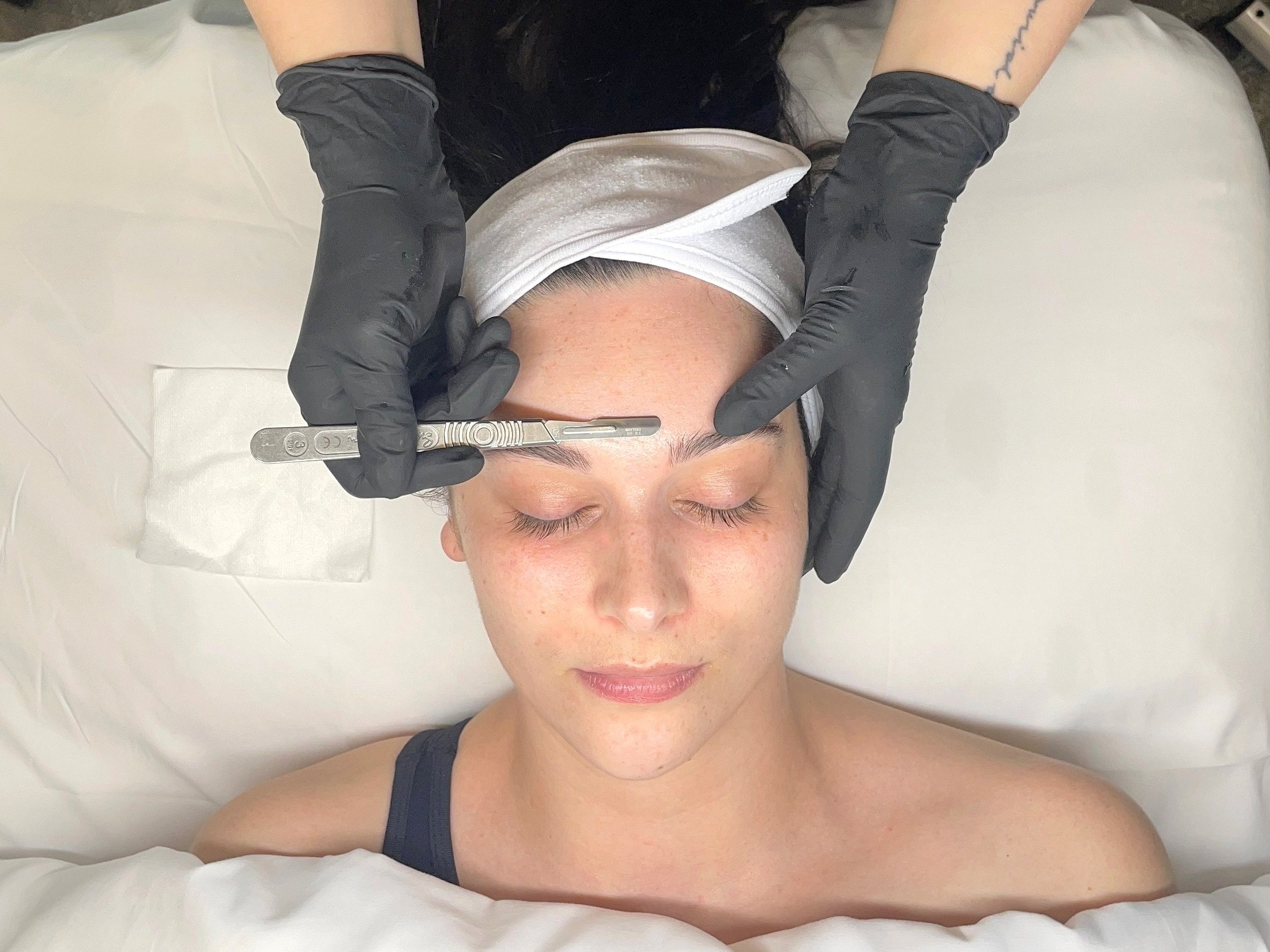Dermaplane Frequently Asked Questions
What is it?
Dermaplaning is an exfoliation procedure where your esthetician will use a surgical steel scalpel to gently “shave” the surface of the skin, removing dead skin and vellus hair (a.k.a. peach fuzz).
Essentially, dermaplaning will cause anything done afterwards to be more effective, as there’s less dead skin and hair in the way. Any products applied will absorb more effectively into the skin and penetrate deeper. This is why I love a dermaplane & oxygen combo, especially for skin in need of some hydration!
Is it for me?
If you have a good bit of active acne or raised lesions on the face, dermaplaning will not be for you. Your esthetician would need to go around anything raised, and if there’s a good portion of the face with raised lesions then you wouldn’t be getting much benefit from the treatment. Additionally, any active infection or irritation on the face (including cold sores, pink eye, eczema, etc.) or sunburn would be a contraindication. You’ll want to make sure the skin is fully healed before you come in for treatment.
Due to the nature of treatment using a blade, if you are on blood thinners or have uncontrolled diabetes, you will also want to avoid dermaplaning.
Will it help acne scarring?
No, dermaplaning is removing only the smallest bit of dead skin off the surface - your scarring goes many many layers deeper than that. Dermaplaning may help by allowing your skincare products to penetrate deeper, but for any scarring that is textural in nature (actual little “dips” or “dents” in the skin), a procedure that rebuilds the skin at a deeper level is necessary such as microneedling or laser.
Will my peach fuzz grow back darker/thicker/coarser?
Not at all! The vellus hair does not grow back darker, thicker, or coarser following a dermaplane. It can’t - the only thing that can alter the way vellus hair grows is an internal hormonal change. It’s worth noting, though, that you may notice the fuzz once it grows back in, especially now that you’re aware of how great your skin feels without it!
Does it hurt?
Not even a little! I often have clients fall asleep during the dermaplane. Afterwards, the skin may be slightly tingly or feeling more “raw,” especially if you have sensitive skin, but it will be tolerable.
How often will I need to come?
The cool thing about dermaplaning is that there won’t be any reason to “need” to come back, unless of course you want to! My caveat here is if you are working with an esthetician to treat a specific skin concern, then there may be a need to stay on schedule. Otherwise there’s no harm in coming on your own time! For most people, anywhere from 4-8 weeks will be ideal for regular upkeep, depending on a few factors.
Can’t I just shave my face at home?
There’s a big difference between an at-home razor and a surgical steel scalpel, so you aren’t dermaplaning by shaving your face at home. An at-home razor does not remove dead skin nor get a close enough shave to have any skin benefits; it solely removes the hair. Quite the opposite, the at-home traditional eyebrow or face razors are serrated, which causes microtears in the skin and does much more harm than good, leading to poor skin texture as well as bad breakouts. Those razors are also often being reused (old bacteria-ew!), leading to potential infection. Also, as much YouTubing as you can do, if you’re not a licensed professional then you don’t have the skin understanding to know how to prep the skin and what products to use afterwards to avoid irritation. Trash those Tinkle razors and stick with a professional for dermaplaning!
Can I get a dermaplane after injectables? (Botox/Dysport, filler)
Two weeks is always the safe bet, especially if getting filler! The reason for this is we want to make sure the injectables have settled before manipulating the face. If you are getting a dermaplane first and want to receive injectables after, then there is typically no need to wait.

